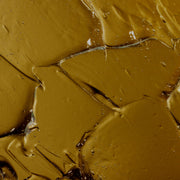
Gold plating offers an accessible yet luxurious way to enjoy the aesthetic appeal of gold without the high cost of solid gold pieces. By coating a base metal—often silver or another metal—with a layer of real gold, gold-plated jewelry provides the same rich shine and elegance associated with pure gold, at a more affordable price point. This technique not only makes high-quality gold designs accessible but also enhances the durability and longevity of base metals, extending the wear of jewelry pieces that may otherwise be prone to tarnishing or corrosion.
The Process of Gold Plating: How It’s Done and the Technologies Behind It
Gold plating is a highly specialized process that involves applying a thin layer of gold to the surface of another metal, usually through electroplating. Here’s a breakdown of the essential steps:
-
Preparation and Cleaning: The base metal is meticulously cleaned to ensure there are no impurities that could prevent the gold from adhering properly. This step usually involves a series of chemical baths to remove oils, dirt, and any oxide layers.
-
Electroplating: In electroplating, the clean metal piece is submerged in a solution containing gold ions and an electric current is applied, which causes the gold to deposit onto the surface of the jewelry. This process ensures an even, smooth layer of gold is formed.
-
Advanced Techniques: Innovations in gold plating technologies have led to options such as PVD (Physical Vapor Deposition), which deposits a highly durable layer of gold under vacuum, providing superior resistance to wear and fading compared to traditional plating. Each method has its own advantages in terms of quality and durability.
Understanding Gold Plating Thickness: Microns and Their Impact
The thickness of gold plating is a crucial factor in determining the durability and quality of gold-plated jewelry. Thickness is measured in microns, where one micron is one-thousandth of a millimeter (0.001 mm). To put it in perspective, a human hair is typically around 50-100 microns thick.
-
2.5 Microns and Above. Often labeled as “heavy gold plating,” this level is recommended for pieces like rings and bracelets that face more frequent contact. Pieces with thicker plating are more resilient to scratches and fading, offering the look of solid gold while keeping the cost accessible.
- Flash Gold Plating (Less than 0.5 Microns). This is the thinnest layer, providing a quick but short-lived gold finish. Flash plating is often used for cost-effective pieces but is more susceptible to fading with regular wear.
-
1-2 Microns. This thickness is common in mid-range jewelry. With proper care, it offers a decent lifespan, though it’s best suited for items that don’t experience excessive wear, such as earrings or pendants.
For rings and bracelets, where daily wear and tear are expected, 2.5 microns or more is advisable to maintain the gold’s color and finish over time. A thicker plating ensures the longevity of the piece and keeps it looking vibrant.
Gold Plated vs. Solid Gold Jewelry: Can You Tell the Difference?
For most people, gold-plated and solid gold jewelry look indistinguishable. Both exhibit the same rich gold tone, and high-quality gold plating achieves a similar polish and shine. However, there are subtle differences that a discerning eye might catch:
-
Weight: Solid gold jewelry is often heavier than gold-plated pieces, especially when the base metal is something lightweight like silver or brass.
-
Stamps and Hallmarks: Solid gold pieces are typically marked with a stamp indicating their purity (e.g., 10k, 14k, or 24k). While some plated jewelry may also have stamps to indicate gold content, these usually specify the item is gold-plated (e.g., "GP" for gold-plated).
-
Conducting a Scratch Test: Although not recommended for valuable items, a scratch test can reveal the base metal beneath the gold layer. However, this can damage the piece, so it’s best left to professionals when authenticity is in question.
In conclusion, gold-plated jewelry brings the allure of gold to a broader audience, making it possible to wear sophisticated and luxurious designs without the solid gold price tag. With the right gold thickness, especially for high-wear items like rings, gold-plated jewelry can deliver beauty, durability, and value that closely resembles that of solid gold.





